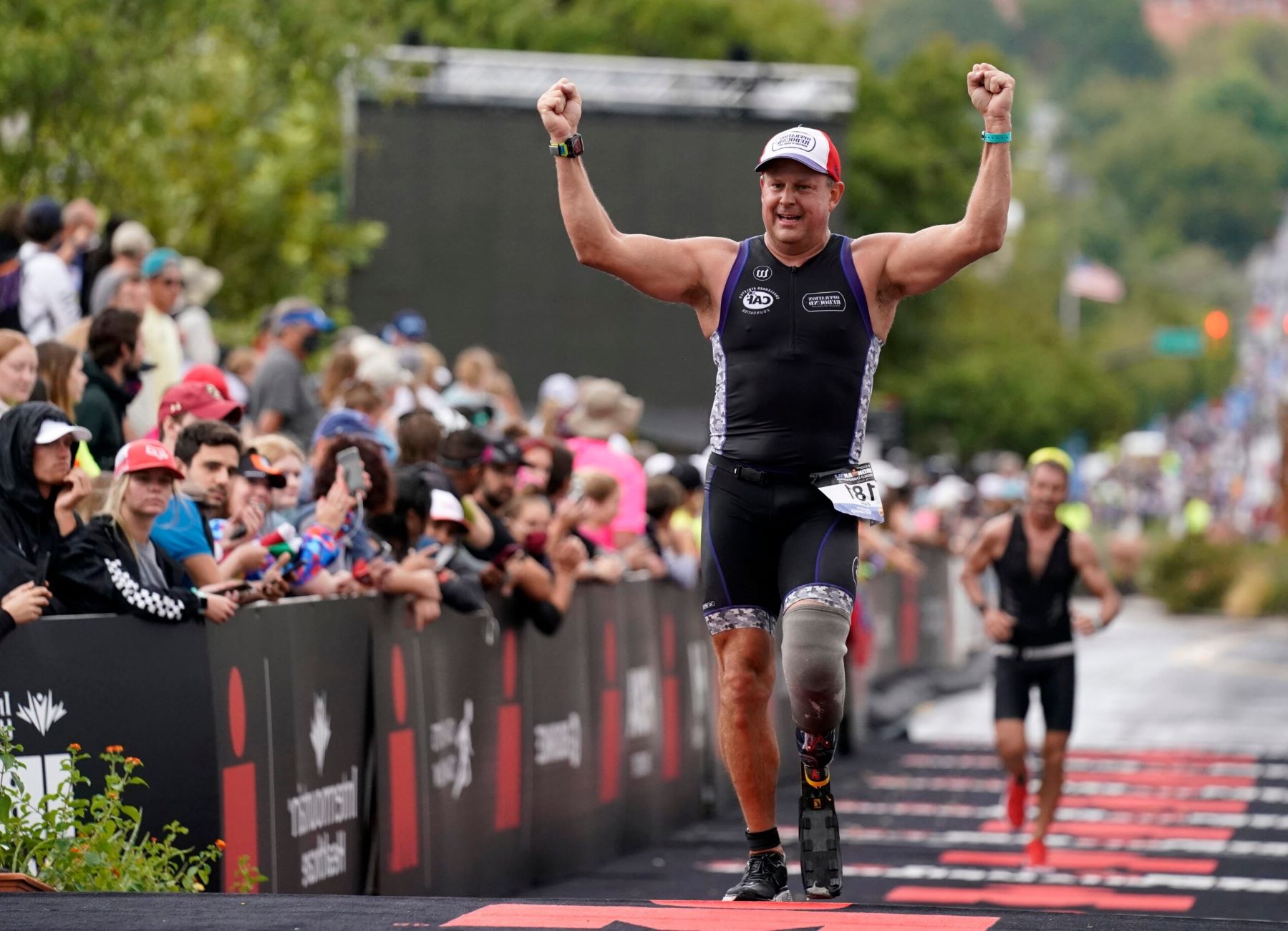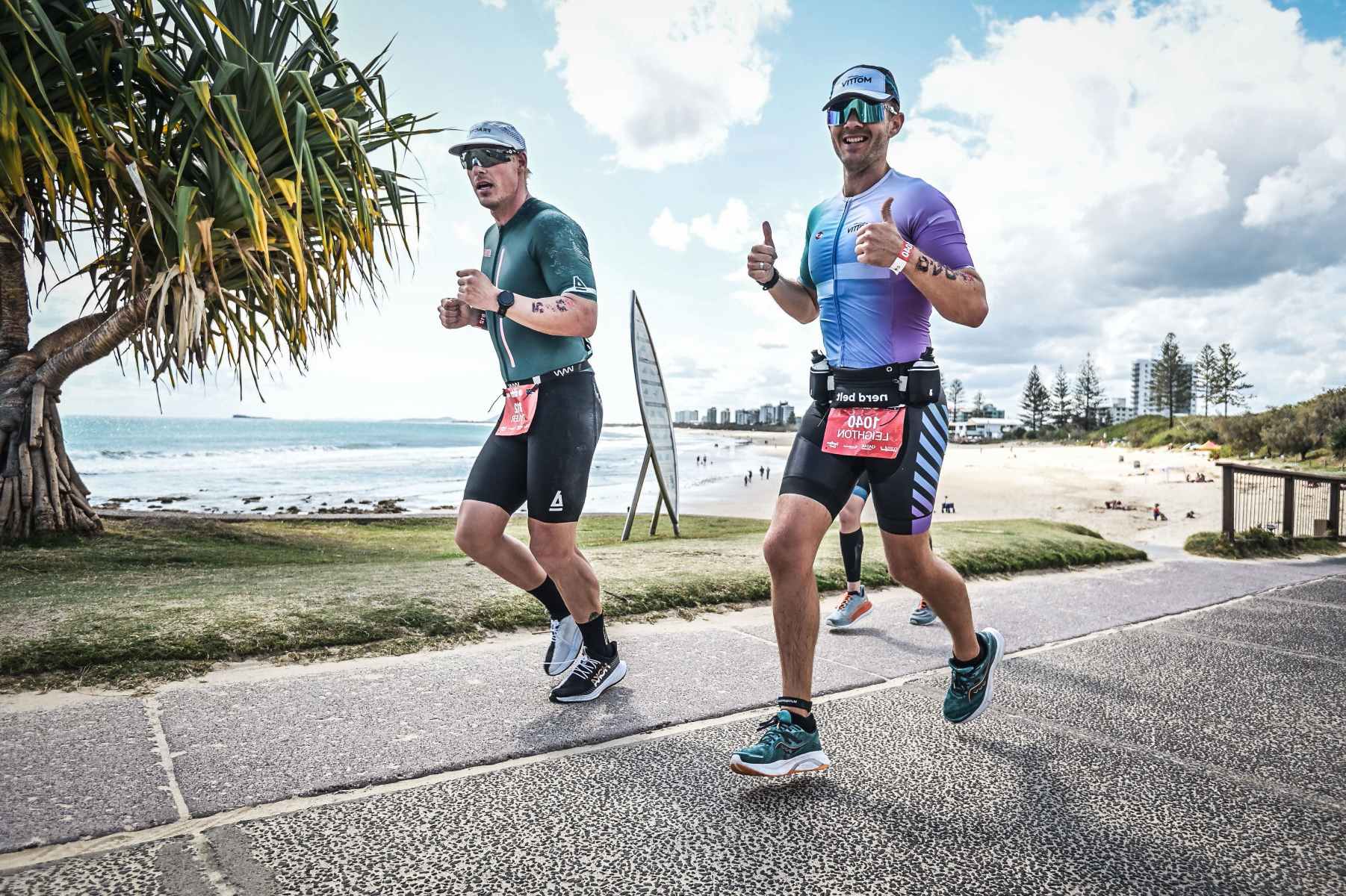Home>Training & Techniques>Training Plans>Half-Marathon Training Plan: Guide To Completing The Race


Training Plans
Half-Marathon Training Plan: Guide To Completing The Race
Published: March 7, 2024
Get ready for your half-marathon with our comprehensive training plans. Follow our expert guide to prepare for and conquer the race. Start training today!
(Many of the links in this article redirect to a specific reviewed product. Your purchase of these products through affiliate links helps to generate commission for Therunningadvisor.com, at no extra cost. Learn more)
Table of Contents
Understanding the Half-Marathon Distance
So, you've decided to take on the challenge of a half-marathon. But what exactly is a half-marathon? Well, a half-marathon is a road running event that covers a distance of 13.1 miles or 21.1 kilometers. It's a significant step up from a 5K or 10K race, but not quite as daunting as a full marathon. The half-marathon distance requires a good balance of speed and endurance, making it a popular choice for both seasoned runners and those looking to push their limits. Understanding the demands of this distance is crucial for effective training and successful race completion.
Why the Half-Marathon Distance?
-
Achievable Challenge: The half-marathon strikes a balance between challenging and achievable. It's a step up from shorter races, providing a new challenge without the intense training commitment of a full marathon.
-
Training Flexibility: Training for a half-marathon allows for more flexibility in your schedule compared to marathon training. This makes it an attractive option for individuals with busy lifestyles.
-
Less Risk of Injury: While still demanding, the half-marathon distance poses less risk of injury compared to full marathons. This makes it a popular choice for runners aiming to push their limits without overexerting themselves.
Demands of the Half-Marathon Distance
-
Endurance: Completing a half-marathon requires significant endurance. It's essential to build up your stamina through consistent training and gradually increasing your mileage.
-
Pacing: Unlike shorter races, pacing is crucial in a half-marathon. Finding the right balance between speed and endurance is key to a successful race.
-
Mental Toughness: The half-marathon distance challenges not only your physical abilities but also your mental strength. It's important to prepare yourself mentally for the distance and push through any mental barriers during the race.
Understanding the unique demands and appeal of the half-marathon distance is the first step towards embarking on a successful training journey. With the right mindset and preparation, you'll be well on your way to conquering the 13.1-mile challenge.
Setting Realistic Goals for Your Training
Setting realistic goals is a crucial step in preparing for a half-marathon. It's essential to establish clear and achievable objectives that align with your current fitness level and overall lifestyle. Here's how you can set realistic goals for your training:
1. Assess Your Current Fitness Level
Before diving into your training plan, take an honest assessment of your current fitness level. Consider factors such as your running experience, recent race times, and overall physical condition. This evaluation will help you gauge where you currently stand and set a baseline for improvement.
2. Understand the Time Commitment
Realistically evaluate the time you can dedicate to training. Consider your work schedule, family commitments, and other responsibilities. Setting goals that align with your available time will help prevent burnout and ensure consistency in your training.
3. Consider Your Personal Goals
Think about what you want to achieve from the half-marathon. Whether it's completing the race within a specific time, improving your overall fitness, or simply enjoying the experience, align your training goals with your personal aspirations.
4. Factor in Potential Challenges
Acknowledge potential obstacles that may arise during your training, such as injuries, unexpected commitments, or fluctuations in motivation. Setting realistic goals involves accounting for these challenges and adjusting your expectations accordingly.
5. Seek Expert Advice
Consult with experienced runners or a certified running coach to gain insights into setting realistic goals. Their expertise can help you tailor your training plan to match your abilities and aspirations, ensuring a balanced and achievable approach.
By setting realistic goals that consider your current fitness level, time commitments, personal aspirations, potential challenges, and expert advice, you'll lay a solid foundation for a successful half-marathon training journey. Remember, the key is to challenge yourself while maintaining a practical and sustainable approach.
Creating a Training Schedule
Creating a well-structured training schedule is essential for preparing your body and mind for the demands of a half-marathon. A thoughtfully designed plan will help you gradually build endurance, improve your running performance, and reduce the risk of injury. Here's a detailed guide on how to create an effective training schedule for your half-marathon journey:
1. Assess Your Current Fitness Level
Before crafting your training schedule, it's crucial to assess your current fitness level. Consider factors such as your running experience, recent mileage, and any existing injuries or physical limitations. This evaluation will serve as a starting point for designing a plan that aligns with your abilities and goals.
2. Set a Realistic Timeline
Determine the duration of your training schedule leading up to the half-marathon. Most training plans typically range from 10 to 16 weeks, depending on your current fitness level and experience. Setting a realistic timeline will allow for gradual progression and minimize the risk of overtraining.
3. Establish Weekly Mileage and Long Runs
Outline the weekly mileage you aim to achieve during your training. Gradually increase your mileage over the weeks to build endurance and adapt your body to the demands of the half-marathon distance. Additionally, designate specific days for long runs, gradually extending the distance to simulate race conditions.
4. Incorporate Rest and Recovery Days
Integrate rest and recovery days into your training schedule to allow your body to recuperate and adapt to the physical stress of running. Adequate rest is crucial for injury prevention and overall performance improvement.
5. Include Cross-Training and Strength Workouts
Incorporate cross-training activities such as cycling, swimming, or yoga to supplement your running regimen. Additionally, schedule strength training sessions to improve muscular strength and endurance, contributing to overall running performance and injury prevention.
6. Gradually Introduce Speed Work
As you progress through your training schedule, gradually introduce speed work sessions such as intervals, tempo runs, and hill repeats. These workouts will enhance your running efficiency, speed, and mental toughness, preparing you for the demands of race day.
7. Adapt the Schedule to Your Lifestyle
Consider your daily schedule, work commitments, and personal life when creating your training plan. Flexibility is key to ensuring consistency in your training, so be prepared to make adjustments when necessary.
8. Seek Professional Guidance
If you're new to half-marathon training or seeking personalized guidance, consider consulting a running coach or experienced runner. Their expertise can help tailor a training schedule that suits your individual needs and maximizes your potential for race day success.
By following these steps and customizing your training schedule to align with your current fitness level, goals, and lifestyle, you'll be well-equipped to embark on a structured and effective half-marathon training journey. Remember, consistency and gradual progression are key to achieving your desired performance on race day.
Incorporating Strength and Cross-Training
Incorporating strength and cross-training into your half-marathon preparation is vital for enhancing overall performance, reducing the risk of injury, and promoting balanced muscular development. Here's a detailed exploration of how to effectively integrate these elements into your training regimen:
-
Importance of Strength Training: Engaging in regular strength training sessions can significantly benefit your running performance. Targeting key muscle groups, such as the quadriceps, hamstrings, glutes, and core, helps improve running efficiency, stability, and power. Additionally, strength training contributes to better posture, reduced muscle fatigue, and enhanced overall endurance.
-
Focus on Functional Movements: When designing your strength training routine, prioritize functional movements that mimic the actions and demands of running. Exercises such as squats, lunges, deadlifts, and planks are effective for strengthening the muscles involved in running and promoting better biomechanics.
-
Cross-Training Activities: Incorporating cross-training activities, such as cycling, swimming, or elliptical workouts, provides a low-impact alternative to running. These activities help maintain cardiovascular fitness while reducing the repetitive stress on your running muscles and joints. Cross-training also offers a mental break from running, preventing burnout and promoting overall well-being.
-
Flexibility and Mobility Work: Don't overlook the importance of flexibility and mobility in your training. Including stretching, yoga, or mobility exercises in your routine can improve your range of motion, reduce the risk of muscle imbalances, and enhance running efficiency. Flexibility work also aids in post-run recovery and injury prevention.
-
Balanced Approach: Strive for a balanced approach to strength and cross-training, ensuring that these activities complement your running schedule without causing excessive fatigue or detracting from your primary running workouts. Consider integrating these sessions on non-running days or after easy runs to optimize recovery.
-
Progressive Overload: Gradually increase the intensity and volume of your strength training and cross-training activities over time. This principle of progressive overload stimulates muscular adaptation and ensures continued improvement in strength, endurance, and overall fitness.
-
Recovery and Adaptation: Allow adequate time for recovery and adaptation after strength and cross-training sessions. Just as with running, your body needs time to repair and rebuild muscle tissue. Prioritize rest, proper nutrition, and quality sleep to maximize the benefits of your training efforts.
By incorporating targeted strength training, diverse cross-training activities, and a focus on flexibility and mobility, you'll establish a well-rounded training regimen that supports your half-marathon preparation. Remember, a holistic approach to training not only enhances your running performance but also promotes long-term physical resilience and overall well-being.
Nutrition and Hydration for Half-Marathon Training
Proper nutrition and hydration play a pivotal role in the success of your half-marathon training. Fueling your body with the right nutrients and maintaining optimal hydration levels are essential for sustaining energy, supporting muscle function, and facilitating recovery. Here's a comprehensive guide to optimizing your nutrition and hydration for half-marathon training:
1. Balanced Macronutrient Intake
Achieving a balance of carbohydrates, proteins, and healthy fats is crucial for meeting the energy demands of training. Carbohydrates serve as the primary fuel source for endurance activities, while proteins aid in muscle repair and recovery. Incorporating healthy fats supports overall health and provides sustained energy.
2. Pre-Run Fueling
Prior to long runs and intense workouts, consume a balanced meal rich in carbohydrates and moderate in protein and fats. This pre-run meal should be easily digestible and tailored to your individual tolerance. Opt for options such as oatmeal, whole grain toast with nut butter, or yogurt with fruit.
3. Hydration Strategies
Maintaining proper hydration is vital for optimizing performance and preventing dehydration. Adequately hydrate throughout the day and pay attention to your fluid intake before, during, and after runs. During long runs, consider carrying a hydration belt or using strategically placed water stations to replenish fluids.
4. Post-Run Recovery
Following long runs, prioritize post-run nutrition to support muscle recovery and glycogen replenishment. Consuming a combination of carbohydrates and proteins within the post-run window (30-60 minutes) helps kickstart the recovery process. Options like chocolate milk, a smoothie with protein powder, or a turkey sandwich on whole grain bread are excellent choices.
5. Nutrient-Dense Foods
Emphasize nutrient-dense foods in your overall diet, including a variety of fruits, vegetables, whole grains, lean proteins, and healthy fats. These foods provide essential vitamins, minerals, and antioxidants that support overall health and performance.
6. Race Day Nutrition
Practice your race day nutrition strategy during training runs to determine the types and timing of fuel that work best for you. Experiment with energy gels, chews, or sports drinks to maintain energy levels during the race without causing gastrointestinal distress.
7. Electrolyte Balance
During prolonged training sessions, especially in warmer conditions, pay attention to electrolyte balance. Consuming electrolyte-rich drinks or incorporating electrolyte tablets can help prevent imbalances and support proper muscle function.
8. Individualized Approach
Tailor your nutrition and hydration plan to your individual needs, taking into account factors such as sweat rate, tolerance to different foods, and any dietary restrictions. What works for one runner may not necessarily work for another, so experiment and find what best suits your body.
By prioritizing balanced macronutrient intake, strategic pre-run fueling, optimal hydration, post-run recovery nutrition, nutrient-dense foods, race day fueling, electrolyte balance, and an individualized approach, you'll establish a comprehensive nutrition and hydration strategy that supports your half-marathon training. Remember, consistency and attention to your body's signals are key to refining and optimizing your fueling plan for race day success.
Mental Preparation and Motivation
Mental preparation and motivation are integral aspects of half-marathon training, influencing not only your performance on race day but also your overall experience throughout the training journey. Here's a detailed exploration of how to cultivate mental resilience and stay motivated as you work towards completing the half-marathon:
-
Visualize Success: Incorporate visualization techniques into your training routine. Take time to visualize yourself crossing the finish line, feeling strong and accomplished. This mental imagery can reinforce your belief in your ability to complete the race and serve as a powerful source of motivation.
-
Set Process-Oriented Goals: While having a target finish time is important, focus on setting process-oriented goals during training. These goals can include consistent training, proper pacing, and overcoming mental barriers during long runs. By concentrating on the process, you'll build confidence and motivation as you achieve these milestones.
-
Positive Self-Talk: Monitor your internal dialogue and cultivate a positive and encouraging self-talk. Replace self-doubt and negative thoughts with affirmations of strength, resilience, and determination. This shift in mindset can significantly impact your motivation and mental fortitude.
-
Embrace Challenges: View challenges and setbacks as opportunities for growth rather than obstacles. Embracing the difficulties of training with a positive mindset can enhance your mental resilience and prepare you to overcome obstacles on race day.
-
Seek Support: Surround yourself with a supportive network of fellow runners, friends, or family members who understand and encourage your training journey. Sharing your experiences and receiving support from others can boost your motivation and provide a sense of camaraderie.
-
Mindfulness and Stress Management: Incorporate mindfulness practices, such as meditation or deep breathing exercises, to manage stress and anxiety related to training and race preparation. Cultivating a calm and focused mindset can enhance your mental preparedness for the race.
-
Reflect on Progress: Regularly reflect on your training progress and acknowledge the improvements you've made. Celebrate small victories, such as completing challenging workouts or increasing your long run distance. Recognizing your progress can fuel your motivation and confidence.
-
Create a Motivational Mantra: Develop a personal mantra or phrase that resonates with you and encapsulates your determination and resilience. Repeat this mantra during tough training sessions or when facing mental fatigue to reignite your motivation and focus.
-
Stay Flexible and Adaptive: Be prepared to adapt your training plan and mindset as needed. Unexpected circumstances may arise, and flexibility is key to maintaining motivation and mental resilience in the face of challenges.
-
Celebrate the Journey: Embrace the entire training journey as an opportunity for personal growth and self-discovery. Acknowledge the dedication and effort you've invested in training, regardless of the race outcome. Finding joy in the process can sustain your motivation and mental well-being.
By integrating these strategies into your training approach, you'll cultivate mental preparedness, resilience, and unwavering motivation to conquer the challenges of the half-marathon. Remember, your mental strength is just as crucial as your physical conditioning in achieving success on race day.
Race Day Strategies and Tips
Race day is the culmination of your dedicated training and preparation, and having effective strategies in place can make a significant difference in your half-marathon experience. Here are essential race day strategies and tips to help you perform at your best and make the most of this memorable event:
1. Early Arrival
Arrive at the race venue early to allow ample time for parking, bib pickup, and familiarizing yourself with the start area. Early arrival helps minimize stress and allows for a relaxed and focused pre-race routine.
2. Warm-Up Routine
Engage in a dynamic warm-up routine to prepare your muscles for the physical demands of the race. Incorporate light jogging, dynamic stretches, and strides to activate your body and prime it for optimal performance.
3. Stick to Familiar Gear
Race day is not the time to experiment with new shoes, apparel, or gear. Stick to the running shoes, clothing, and accessories that you've trained in to avoid potential discomfort or unforeseen issues during the race.
4. Hydration and Nutrition
Consume a light, easily digestible meal 2-3 hours before the race, focusing on carbohydrates for energy. Hydrate adequately but avoid excessive fluid intake immediately before the start to prevent discomfort. Carry energy gels or chews if you've practiced with them during training.
5. Pacing Strategy
Establish a realistic pacing strategy based on your training and race goals. Avoid starting too fast in the excitement of the race, as this can lead to early fatigue. Aim for a steady and controlled start to conserve energy for the later miles.
6. Mental Focus
Maintain a positive and focused mindset as you approach the start line. Remind yourself of your training, visualize success, and embrace the challenge ahead. Stay present and focused on the mile you're in, rather than feeling overwhelmed by the entire distance.
7. Utilize Aid Stations
Familiarize yourself with the location of aid stations along the course. Strategically plan when you'll hydrate and refuel, and be mindful of discarding cups and wrappers responsibly to keep the course clean for fellow runners.
Read more: The Complete Guide To Running And Hydration
8. Crowd Engagement
Draw energy from the supportive crowds and fellow runners along the course. High-five spectators, acknowledge encouraging signs, and use the positive energy of the crowd to boost your motivation and spirits.
9. Mental Toughness
Anticipate challenging moments during the race and prepare to push through them. Embrace discomfort as a natural part of the race and draw on your mental toughness to stay resilient and focused.
10. Finish Line Sprint
As you approach the final stretch, summon your remaining energy for a strong finish. Dig deep and unleash a finishing kick, celebrating the culmination of your hard work and dedication.
11. Post-Race Recovery
After crossing the finish line, prioritize post-race recovery by hydrating, refueling with a balanced meal, and engaging in light stretching. Take time to reflect on your accomplishment and celebrate with friends and fellow runners.
By implementing these race day strategies and tips, you'll be well-prepared to tackle the half-marathon with confidence, resilience, and a strategic approach. Embrace the experience, stay adaptable, and savor every moment of this remarkable achievement.







